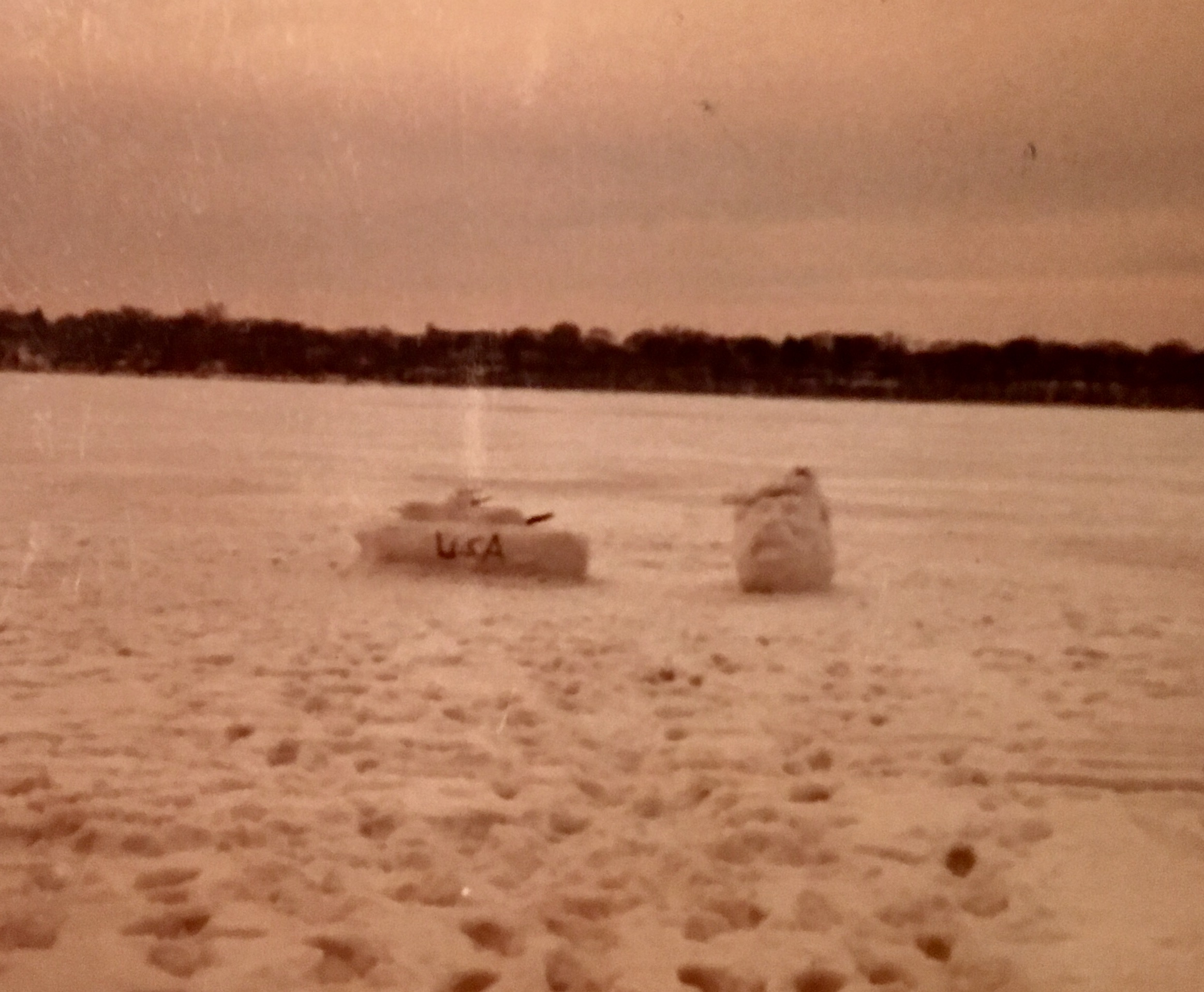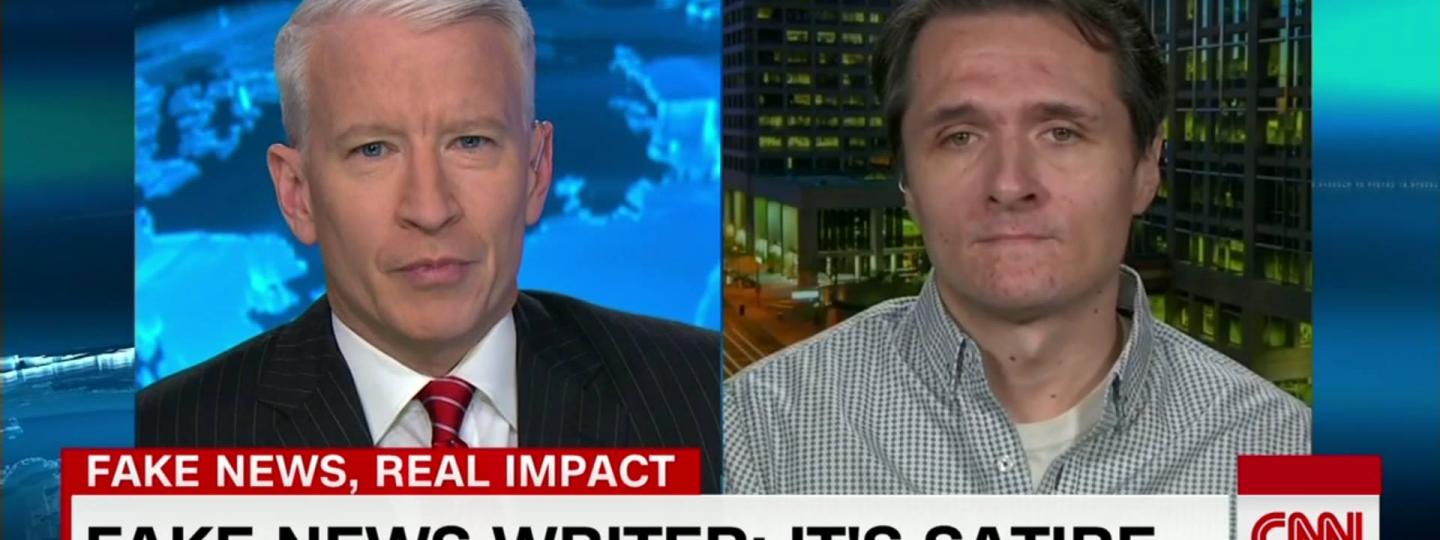Seven weeks after his death, most of Paul Horner’s fake news empire is offline.
Horner, who once boasted in The Washington Post that his fake news stories affected the 2016 presidential election, was found dead Sept. 18 at his apartment in Phoenix, Arizona. The news spawned doubt and Twitter conspiracies about whether the 38-year-old man who made a living out of spreading falsities had indeed died, a fact that was later confirmed by Maricopa County authorities.
And his sites have gone with him.
According to an analysis conducted by Poynter, at least 20 fake news websites registered in Horner’s name have gone offline since his death. None of the domains had expired as of his death Sept. 18, and only four have since then, according to the query protocol service Whois.com.
Several of Horner’s sites used deceptive URLs such as abcnews.com.co or cnn.com.de to trick prospective readers into thinking they were mainstream sources. They published fake stories with headlines like “Obama Announces Third Term Presidential Run” in order to stoke partisan responses.
But while Horner’s fake news sites caused an uproar last year during the election and attracted attention from the international media, he consistently said his work was satirical. In addition to properties posing as credible news sources, Horner — who dabbled in stand-up comedy and charity work — created a fake dating site for members of the Islamic State and a fictional character called Fappy, which he described as an “anti-masturbation dolphin.” It has a Facebook page and an online merchandise store.

Despite its vapidity, Horner’s work garnered widespread attention and hundreds of thousands of page views. Now it’s all gone.
The last screenshots available on the Internet Archive’s Wayback Machine for several of Horner’s sites date to late September and early October. Additionally, Horner’s own online footprint was also altered around the time of his death.
One of his Reddit accounts seems to have been deleted. His now-offline personal website redirected to a NewsExaminer.net article containing Horner’s personal journal, containing links to many of his hoaxes.
That journal was last updated on the day of his death, according to the Wayback Machine.
As of publication, it’s unclear why those changes were made in the days leading up to and after Horner’s death — or who made them.
It is common for hosting and domain companies to shutter websites upon being notified by a family member that their owners have died. But Horner’s brother JJ told Poynter he had no idea the sites that launched his brother into the national spotlight had been taken offline.
“I don’t even know what all is out there,” he said.
A postmortem mystery
Maarten Schenk was one of the last people to hear from Paul Horner.
“I had discovered this new site he created and I wrote about it on Lead Stories,” said Schenk, the Belgian owner of a hoax-tracking service called Trendolizer. “I got an email from him (Saturday, Sept. 16) saying he liked what I was doing, and if you ever want an interview, just email me or call me.”
Then Schenk saw reports that Horner had been found dead. He thought it was a joke.
“I was completely confused at that point and said, ‘If this is real, and I am completely confused, that speaks volumes to how good he was at what he did,’” he said.
If Horner did fake his death, it probably wouldn’t have come as a shock. Horner told Schenk that one of his proudest pranks was convincing his own father for two years that he was gay. He lied about winning a Powerball jackpot and pretended to be the person behind Banksy (more than once).
Horner’s death is no longer in question — but his legacy is.
A month after Horner died, Schenk told Poynter he didn’t know what happened to all of his sites, which he monitored on a regular basis. He figured his family closed them.
“Some of these domain names, if you look them up using Whois, they’re just erased. If your server goes down because you stop playing the bills, then you should still get a 404 for it or some kind of error,” Schenk said. “I have never heard about domains with a dead man switch.”
According to data from Whois, superofficialnews.com, the domain for one of Horner’s main sites — listed as the name server for more than half the fake news sites analyzed by Poynter — doesn’t expire until April and was working as of publication. A spokesperson for GoDaddy, the site’s listed registrar, told Poynter they wouldn’t seek to alter the domain until that date.
Still, the site is offline. That would imply that there’s an issue with its hosting, but a search erroneously says the site isn’t registered. The GoDaddy spokesperson said that means there’s probably something wrong with how the site is listed in the Domain Name System.
A spokesperson for DomainTools, a Seattle-based DNS research service, told Poynter that, based on data from its proprietary investigation platform Iris, it appears that someone did alter the DNS for superofficialnews.com on or around Oct. 2.
“Whoever has control of that has deleted the entry for that website,” the spokesperson said, “and because they deleted the entry for the domain itself, you’d have no way to get to it.”
While it’s still unclear how that happened, the DomainTools spokesperson said there are two possible scenarios.
Short of an expired lease or Horner manually taking them offline, the first plausible explanation for the death of his sites is that someone else manually took them offline. But JJ Horner, Schenk and Rachel Sandler — a former reporting intern for USA Today who interviewed Horner over the summer — all told Poynter that his fake news empire was run solo. Horner relied on contributing writers but never mentioned anyone that helped him maintain the sites.

The second — and most probable — potential explanation for why Horner’s sites were taken down is that his payment method expired, the DomainTools spokesperson said. JJ Horner told Poynter his mother closed Paul’s bank accounts and credit cards after he died.
But without confirmation from the hosting companies, several of which told Poynter they have privacy policies that bar them from sharing intimate account details, it’s unclear if that’s what downed Horner’s sites hosted on Super Official News nameservers. And it also doesn’t explain everything.
According to Whois data, two of the sites analyzed by Poynter were updated in early and mid-October — after Horner’s death but before their expiration dates. The GoDaddy spokesperson told Poynter that Whois registers an update whenever the DNS servers or domain contact information are changed, which bolsters the case for a DNS-related problem.
More perplexing is the fact that paulhorner.org was automatically renewed Oct. 28 but remained offline as of publication. The other one, abcnews.com.co, expired Oct. 25 and did not renew.
A spokesperson for 1&1 Internet, the German internet company that hosts Horner’s personal website, told Poynter they wouldn’t shutter a site or close someone’s account until they defaulted payment or if the company received a death certificate.
So even though Horner’s credit cards were canceled, somehow the domain renewal for his personal website still went through. It’s possible the payment could take several weeks to bounce.
Regardless of what happened, JJ Horner said he was surprised and sad to hear his brother’s websites were down.
“That was his entire life, you know?” he said. “He’d spend almost every waking hour (on his sites) — if he was working on something, it would be nonstop.”
From Saddam Hussein sculptures to fake news
Paul Horner’s death surprised his family.
“I didn’t see it coming,” JJ Horner said. “It’s definitely been a whirlwind for me, just trying to tie up all of his loose ends.”
As of publication, Horner’s cause of death was still officially undeclared. But there are clues.
Mark Casey, director of public information for the Maricopa County Sheriff’s Office, told Poynter in an email that evidence from the scene and interviews with family members about Horner’s past prescription drug abuse suggest an accidental overdose. The case is pending a toxicology report from the medical examiner’s office, which will likely take months.
Horner’s struggle with drugs is well-documented. The Arizona Republic reports he was arrested in 2011 with more than $15,000 of ketamine, heroin, diazepam, oxycodone, Prozac and hundreds of syringes, a crime for which he spent four months in jail.
JJ Horner said he wasn’t sure if his brother was still using drugs or if that contributed to his death.
“Anything at this point is still speculation,” he said. “It matters, but it also kind of doesn’t.”
The alterations to Horner’s personal website were made on the day of his death. But Schenk and Horner were getting in touch for an interview, and JJ Horner said his brother didn’t want to commit suicide.
“Paul’s definitely had ups and downs in his life and stuff,” he said. “I absolutely know he didn’t want to die, so there’s that.”
Horner had always been interested in news and politics, JJ said. When he was 10 or 11 years old, Paul used to draw political cartoons incessantly and read the newspaper every day. JJ sent Poynter a picture from one winter growing up in Minnesota when, instead of making a snowman, Paul created a Saddam Hussein sculpture.

“He kind of knew what was going on in the world,” he said.
Later, Horner’s knowledge of news and popular culture, as well as his past work as a comedian, served him well as a fake news writer. JJ Horner said his brother was also an expert in social media optimization and web development, which he used to game Google’s search algorithm to display his fake news stories high up in the results.
Those two skills comprised his brother’s genius, he said.
“I feel like he had the formula to write those types of articles that would get shared a lot,” he said.
And it paid off — literally.
JJ Horner said his brother didn’t have a job for almost eight years before his death, instead subsisting entirely on the advertising revenue he made from his fake news sites — which were monetized by Google AdSense and three other advertisers, Paul said in a February Reddit post. He usually earned an average of $3,000-$6,000 per month in ad revenue, but once neared $20,000 per month, he claimed.
And that’s not counting his biggest stories. JJ Horner said he thinks Paul’s second story about being Banksy earned close to $30,000 in ad revenue alone. Poynter was not able to independently confirm those figures.
“Paul paid himself, and his only agenda was his agenda,” he said. “He did it for him, and a lot of people don’t understand that and think it’s malicious.”
The death of a hoax empire
For a while, Paul Horner was the go-to talking head for fake news.
He was interviewed by outlets ranging from CNN to RT. He once even testified in front of the European Parliament about his philosophy on fake news, which he frequently said was aimed at educating people about biased information rather than waging misinformation campaigns.
But how much of an impact did Horner really have on the misinformation ecosystem?
“He was so prolific that he showed it could be done as a business model at the time,” said Brooke Binkowski, managing editor of Snopes. “A lot of people definitely copied him.”
Horner’s legacy can be measured by the money that fake news purveyors have made by spreading hoaxes on Facebook, Twitter and Google, Binkowski said. Among the biggest sites she said took a page from Horner are The Last Line of Defense and As American as Apple Pie, which both spread Islamophobic and right-wing hoaxes and conspiracies.
Fake news existed before Horner. But Binkowski said he publicly taught people how to weaponize it.

“You just have to choose keywords that piss people off,” she said. “He showed that it was possible.”
And that opened up Pandora's Box.
Both Binkowski and Josh Gillin, a staff writer at PolitiFact, told Poynter that Horner’s stories during the 2016 election cemented his legacy in the online misinformation ecosystem. Two of the most notable include one that falsely claimed anti-Trump protesters were paid — which Gillin said he’s still seen people get tricked into believing — and one that declared the Amish would win Trump the election. Horner told BuzzFeed the latter racked up 750,000 page views in two days (traffic estimates consulted by Poynter suggest his most popular websites did get hundreds of thousands of page views).
Successes like Horner’s were later replicated on other sites. But they’ve become more divisive and insidious than stories laced with references to an anti-masturbation dolphin.
“He kind of paved the way for a bunch of bad stuff,” Binkowski said. “Over time, it became less and less funny, and more politicized and angry.”
She said she’s seen more hoaxes prod existing divisions in the U.S. as part of an effort to “destroy compassion in the United States.” One example is a fake news story that claimed the person responsible for this past weekend’s mass shooting at a Texas church was a member of the Antifa movement.
And that’s a drastic departure from Horner’s brand of fakery.
“The stories would be written fairly straightforwardly; there would just be an element of absurdity to them that he felt kind of keyed the reader into this was made up,” Gillin said. “I don’t see that anymore.”
Despite Horner’s influence on other fake news purveyors, it did have its limits.
In the months after the election, Horner was losing ground. He told Sandler in August that Facebook’s partnership with fact-checking organizations to flag and debunk fake news ended up hurting his bottom line, though he wouldn’t mention specific figures.
On the flip side, Binkowski said big tech companies also had a role to play in Horner’s success.
“I wouldn’t lay the blame at the feet of Paul Horner — he was just an opportunist,” she said. “I think Facebook, Google and Twitter need to be blamed more than anyone for making this financially viable.”
While Horner is gone, the business model he tapped into lives on.
Facebook, Google and Twitter testified to Congress last week about how they’ve taken steps to combat misinformation on their platforms — but it hasn’t been enough to eradicate false or misleading content and the financial incentives that drive it.
Mic reports that, in spite of Facebook’s partnership with fact-checkers to flag and demote misinformation, one social media strategist still made $20,000 off a piece of satire before it was taken down. The New York Times reports that Google has served fake news ads in one place they definitely do not belong — fact-checking sites.
Misinformation is big business, and Horner had at least some role in exploiting that. But both Gillin and Binkowski agreed there’s one thing Horner mastered above everything else, something that is only growing online — doubt.
“I’m still not 100 percent convinced he’s dead,” Binkowski said, “because this is his legacy, right?”







